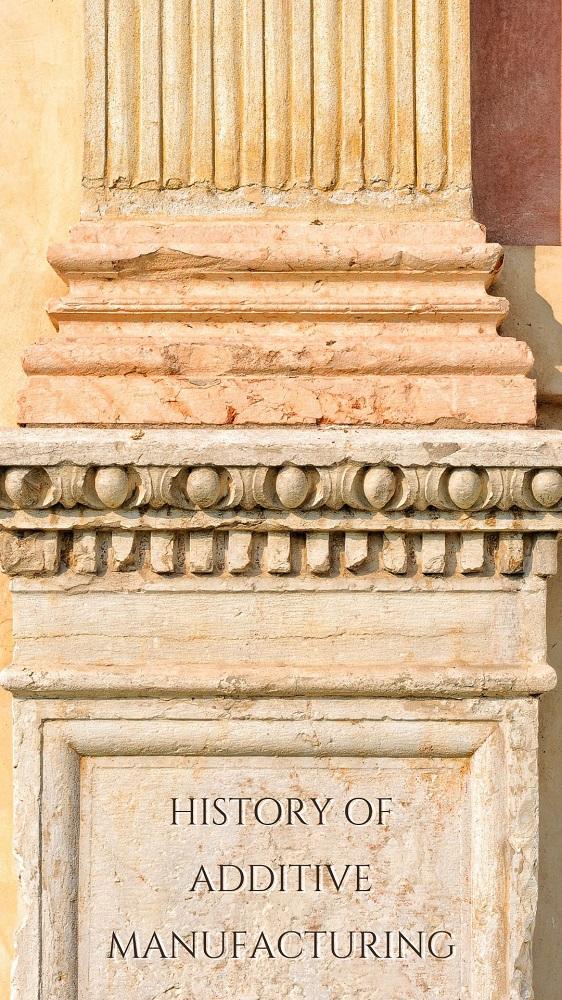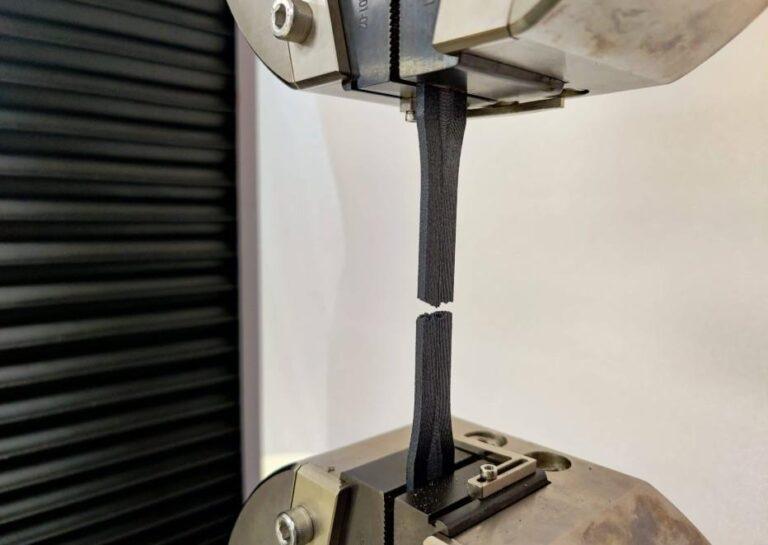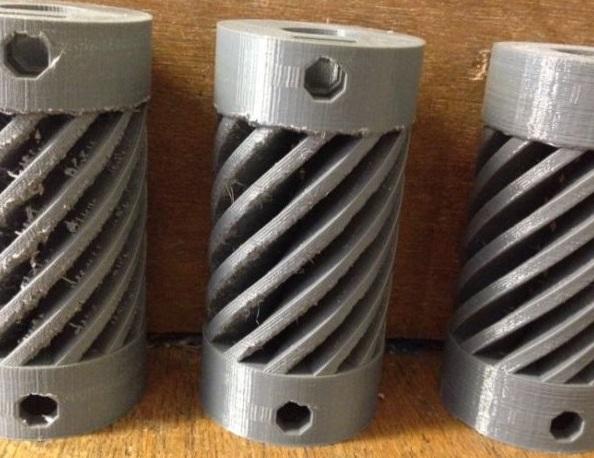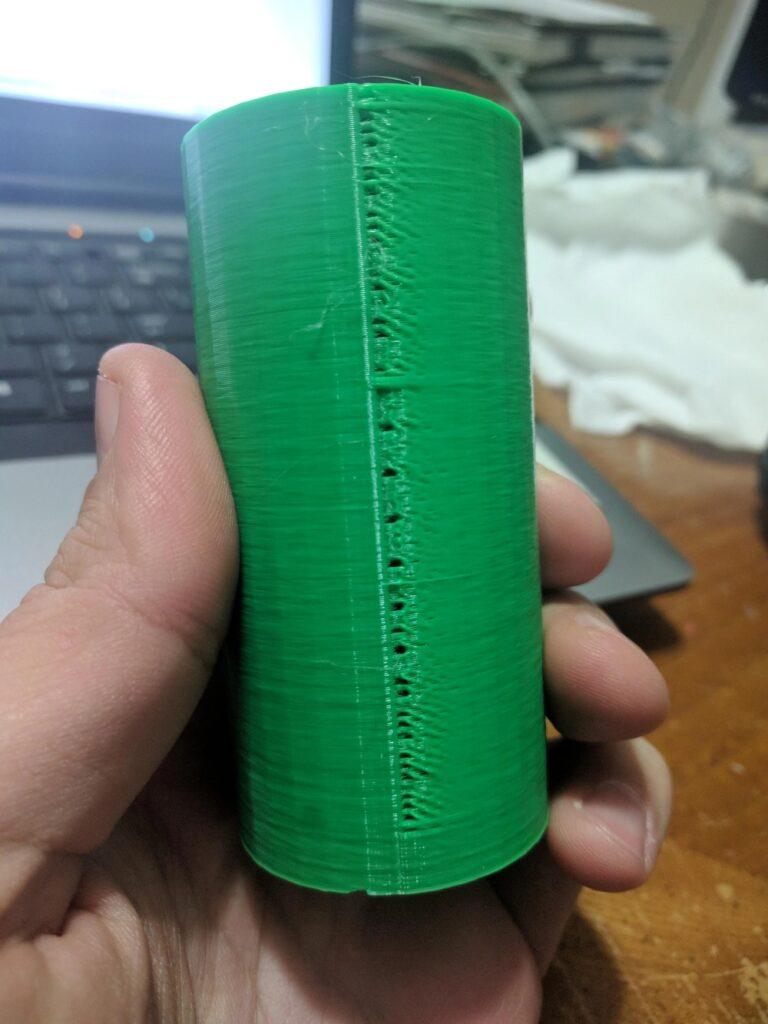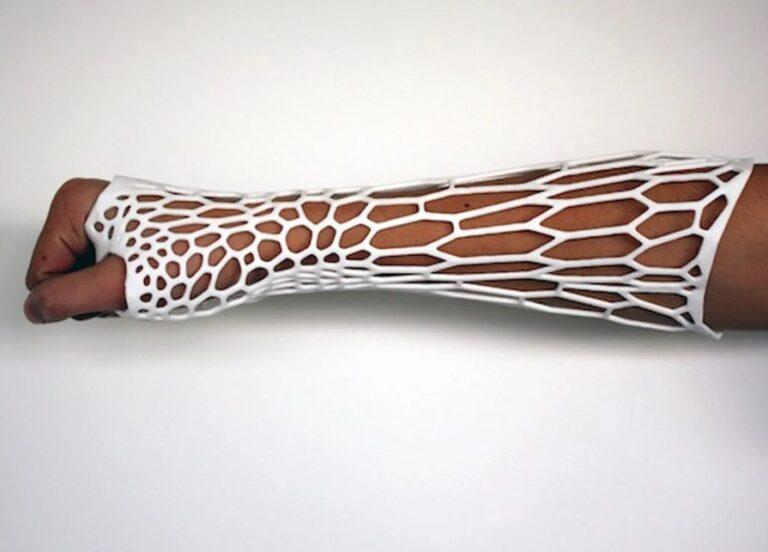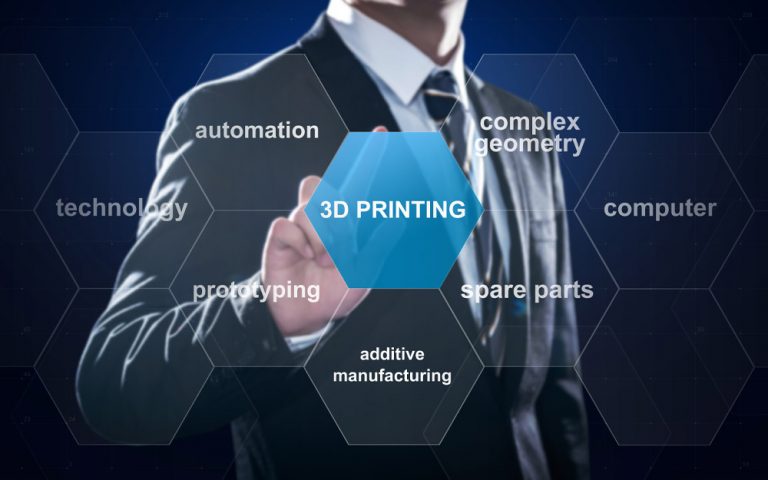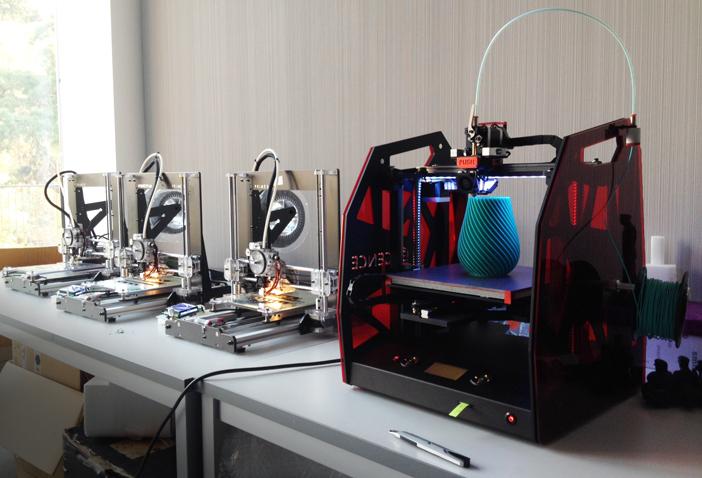History of Additive Manufacturing: Tracing the Origins of 3D Printing
Introduction
In manufacturing, a groundbreaking revolution has unfolded with the advent of Additive Manufacturing, also known as 3D printing. This transformative technology has ushered in a new era of production, where objects are built layer by layer, providing unprecedented design freedom and manufacturing possibilities.
In this comprehensive post, we will delve into the captivating history of Additive Manufacturing and explore the origins of its seven primary technologies. Each technology has its distinct path of development, contributing to the diverse landscape of 3D printing.
First, let’s journey through time, starting with Stereolithography (SLA). We will uncover the historical background and milestones that led to the emergence of this technique, which utilizes lasers to solidify photopolymer resins into intricate 3D shapes.
Next, we will navigate the evolution of Selective Laser Sintering (SLS), a technology that harnesses laser power to fuse powdered materials, such as polymers or metals, layer by layer. Discover the key advancements and pioneers that propelled SLS to become a prominent additive manufacturing method.
Moving on, we will explore the rise of Fused Deposition Modeling (FDM), a widely adopted technique that extrudes molten thermoplastic filaments to build objects layer by layer. Uncover the origins and significant milestones that shaped the development of FDM, making it accessible and versatile for various applications.
As we continue our expedition into the history of Additive Manufacturing, we will encounter Electron Beam Melting (EBM), Laminated Object Manufacturing (LOM), Binder Jetting, and Direct Metal Laser Melting (DMLM). Each of these technologies has its distinct chronicle, with pioneers and innovators driving their advancements and pushing the boundaries of additive manufacturing.
Throughout this post, we will delve into the historical background of each technology, highlighting its key breakthroughs, applications, and contributions to the additive manufacturing landscape.
Stereolithography (SLA) Historical Background
The history of Stereolithography (SLA) can be traced back to the early 1980s when a group of researchers at the University of Texas at Austin revolutionized three-dimensional object creation. Their innovative process, Stereolithography, involved curing a liquid resin layer by layer using a laser.
In 1986, 3D Systems introduced the SLA-1, the first commercial stereolithography machine. This milestone marked a significant breakthrough for the additive manufacturing industry, enabling engineers and designers to create prototypes and tooling faster and more efficiently.
Since the introduction of the SLA-1, Stereolithography has undergone a continuous evolution. Advancements in materials and techniques have emerged, resulting in remarkable improvements in speed and accuracy. Today, SLA is widely employed across the aerospace, automotive, medical, and jewelry industries.
Major Milestones in the Development of Stereolithography
- 1983: Chuck Hull develops the first stereolithography machine.
- 1986: 3D Systems introduces the SLA-1, the first commercial stereolithography machine.
- 1990: SLM Solutions is founded.
- 1995: EOS introduces the first SLM machine.
- 2000: ASTM International recognizes selective laser melting (SLM) as a new manufacturing process.
- 2005: The first SLM machine for use in the medical industry is introduced.
- 2010: SLM is used to create the first 3D-printed prosthetic heart valve.
- 2015: The first SLM machine for use in the aerospace industry is introduced.
- 2020: SLM is used to create the first 3D-printed jet engine turbine blade.
The Future of Stereolithography
Stereolithography (SLA) is a rapidly growing technology with a promising future. As the process continues to evolve, it is expected to find broader applications across various industries. SLA has the potential to revolutionize manufacturing by enabling the creation of complex parts with unmatched speed and accuracy. With ongoing advancements, the possibilities for Stereolithography are limitless, shaping the future of additive manufacturing.
Selective Laser Sintering (SLS) Historical Background
Selective Laser Sintering (SLS), a remarkable additive manufacturing technology, has a fascinating history marked by significant milestones and advancements. Let’s explore the journey of SLS from its inception to its widespread adoption.
In the 1990s, researchers at the Fraunhofer Institute for Laser Technology in Aachen, Germany, pioneered the development of Selective Laser Sintering. This groundbreaking process utilized a high-power laser to selectively fuse metal powders, layer by layer, creating intricate three-dimensional objects.
In 1995, EOS GmbH, a leading machine tool manufacturer, introduced the first commercial SLS machine based on the Fraunhofer research. This pivotal milestone enabled the creation of prototypes and tooling for industries such as aerospace and automotive.
Since the introduction of the first commercial SLS machine, the technology has continually evolved. Innovations in materials and techniques have emerged, propelling significant advancements in speed, accuracy, and reliability. Today, SLS is widely adopted across diverse industries, including aerospace, automotive, medical, and jewelry.
Major Milestones in the Evolution of Selective Laser Sintering
- 1990: Researchers at the Fraunhofer Institute for Laser Technology in Aachen, Germany, develop the first SLS process.
- 1995: EOS GmbH introduces the first commercial SLS machine.
- 1997: The first 3D-printed titanium implant is created using SLS.
- 2000: SLS creates the first 3D-printed jet engine turbine blade.
- 2005: SLS manufactures the first 3D-printed prosthetic heart valve.
- 2010: SLS produces the first 3D-printed car part.
- 2015: SLS manufactures the first 3D-printed aircraft component.
- 2020: SLS produces the first 3D-printed medical device.
The Future of Selective Laser Sintering
Selective Laser Sintering (SLS) is a rapidly growing technology with a promising future. As the process continues to evolve, we expect it to find broader applications across various industries. SLS has the potential to revolutionize manufacturing by enabling the creation of complex parts with unprecedented speed and accuracy.
The future applications of SLS are vast
- In aerospace, SLS could produce lightweight, high-strength parts for aircraft and spacecraft.
- In the automotive industry, SLS has the potential to create custom-made parts and tooling, enhancing the manufacturing process.
- In the medical field, SLS holds promise for producing prosthetics, implants, and other medical devices.
- In jewelry manufacturing, SLS can facilitate the production of customized jewelry and tooling.
As SLS evolves and matures, it will unlock new frontiers across industries with its versatility and potential for innovation. With ongoing advancements and expanding applications, Selective Laser Sintering is shaping the future of additive manufacturing.
Fused Deposition Modeling (FDM) Historical Background
Fused Deposition Modeling (FDM) has a rich history of milestones and transformative advancements. Let’s dive into the intriguing journey of FDM, from its inception to its widespread adoption.
In the late 1980s, S. Scott Crump, co-founder of Stratasys, revolutionized manufacturing by developing Fused Deposition Modeling. This additive manufacturing process involved depositing thermoplastic material layer by layer using a heated nozzle, enabling the creation of intricate three-dimensional objects.
In 1989 Stratasys introduced the first commercial FDM printer, the 3D Modeler. This pioneering machine initially found its place in creating prototypes and models. However, its capabilities quickly caught the attention of various industries, including automotive, aerospace, and medical, propelling its usage towards production parts.
Since introducing the first commercial FDM printer, FDM technology has continually evolved. Advancements in materials and techniques have emerged, leading to dramatic improvements in speed and accuracy. Today, FDM is one of the most popular additive manufacturing processes globally, finding applications across various industries.
Significant Milestones in the Emergence of Fused Deposition Modeling
- 1988: S. Scott Crump develops the first FDM process.
- 1989: Stratasys introduces the first commercial FDM printer, the 3D Modeler.
- 1992: Stratasys introduces the first FDM printer in the medical industry.
- 1995: The first 3D-printed prosthetic limb is created using FDM.
- 2000: FDM creates the first 3D-printed car part.
- 2005: FDM produces the first 3D-printed aircraft component.
- 2010: The first 3D-printed medical device is developed through FDM.
- 2015: FDM manufactures the first 3D-printed home appliance.
- 2020: FDM constructs the first 3D-printed educational tool.
The Future of Fused Deposition Modeling
Fused Deposition Modeling (FDM) is a rapidly growing technology with a bright future. As the process continues to evolve, it will become even more widely used across various industries. FDM holds the potential to revolutionize manufacturing by enabling the creation of complex parts with unprecedented speed and affordability.
Looking ahead, FDM’s potential applications are vast and varied:
- FDM could produce lightweight, high-strength parts for aircraft and spacecraft in aerospace.
- In the automotive industry, FDM could create custom-made parts and tooling, enhancing manufacturing.
- In the medical field, FDM could produce prosthetics, implants, and other medical devices.
- In education, FDM could generate educational tools like 3D human body models or historical artifacts.
- FDM could craft custom-made products such as toys, jewelry, or home appliances in consumer goods.
Fused Deposition Modeling is a versatile technology with tremendous potential. As the process continues to evolve, it is likely to become even more widely adopted in the years to come, revolutionizing the way we manufacture objects.
Electron Beam Melting (EBM) Historical Background
Electron Beam Melting (EBM) has a fascinating history with significant milestones. Let’s explore the captivating journey of EBM, from its inception to its remarkable growth.
In the early 1960s, United States Air Force researchers pioneered EBM, using a high-energy electron beam to melt metal powder layer by layer.
In 1964, Vacuumschmelze (VS) introduced the first commercial EBM machine, enabling aerospace and automotive industries to create prototypes and tooling.
Over the years, EBM technology has evolved with improved speed and accuracy. Today, EBM finds applications in the aerospace, automotive, medical, and jewelry industries.
Major Milestones in the Evolution of Electron Beam Melting
- 1964: United States Air Force researchers developed the first EBM process.
- 1965: Vacuumschmelze (VS) introduces the first commercial EBM machine.
- 1970: The first 3D-printed titanium implant is created using EBM.
- 1980: EBM creates the first 3D-printed jet engine turbine blade.
- 1990: The first 3D-printed prosthetic heart valve is created using EBM.
- 2000: EBM manufactures the first 3D-printed car part.
- 2010: EBM produces the first 3D-printed aircraft component.
- 2020: EBM manufactures the first 3D-printed medical device.
The Future of Electron Beam Melting
EBM is a rapidly growing technology with a bright future. It is likely to become even more widely used in various industries.
Potential Future Applications of EBM:
- Aerospace: Lightweight, high-strength parts for aircraft and spacecraft.
- Automotive: Custom-made parts and tooling for cars and trucks.
- Medical: Prosthetics, implants, and other medical devices.
- Jewelry: Custom-made jewelry and tooling for jewelry manufacturing.
EBM is a versatile technology with significant potential. As it continues to evolve, its usage is expected to expand across industries in the future.
Laminated Object Manufacturing (LOM) Historical Background
Laminated Object Manufacturing (LOM) has a rich history of milestones and transformative advancements. Let’s delve into the intriguing journey of LOM, from its inception to its remarkable growth.
In the early 1980s, Japanese engineer Hideo Kodama pioneered the LOM process, using a heated roller to bond thin layers of material together.
In 1987, Kodama founded D-MEC, a company that commercialized the LOM process. The introduction of the first commercial LOM machine followed in 1992.
Over time, LOM technology has continued to evolve. Advances in materials and techniques, along with significant improvements in speed and accuracy, have expanded the scope of LOM applications across various industries.
Major Milestones in the Development of LOM
- 1980: Hideo Kodama develops the first LOM process.
- 1987: Kodama establishes D-MEC to commercialize LOM.
- 1992: Introduce the first commercial LOM machine.
- 1995: Use LOM to create the first 3D-printed prosthetic limb.
- 2000: Use LOM to create the first 3D-printed car part.
- 2005: Use LOM to create the first 3D-printed aircraft component.
- 2010: Use LOM to create the first 3D-printed medical device.
- 2015: Use LOM to create the first 3D-printed home appliance.
- 2020: Use LOM to create the first 3D-printed educational tool.
The Future of Laminated Object Manufacturing
LOM is a rapidly growing technology with immense potential. As the process continues to evolve, diverse industries are poised to widely adopt it. LOM can revolutionize manufacturing by enabling the production of complex parts with remarkable speed and affordability.
Looking ahead, LOM holds numerous potential applications:
- Aerospace: Lightweight, high-strength parts for aircraft and spacecraft.
- Automotive: Custom-made parts and tooling for cars and trucks.
- Medical: Prosthetics, implants, and other medical devices.
- Education: Educational tools like 3D models of the human body or historical artifacts.
- Consumer Goods: Custom-made consumer goods such as 3D-printed toys, jewelry, or home appliances.
LOM is a versatile technology with a wide range of potential applications. As the process continues to evolve, companies and industries are likely to increasingly adopt it in the future.
Binder Jetting Historical Background
Binder Jetting is an additive manufacturing (AM) process that selectively deposits a liquid binding agent onto a powder bed, fusing the particles layer by layer to create a 3D object.
In the early 1990s, MIT researchers, led by Ely Sachs and Mike Cima, developed the binder jetting process to fabricate complex 3D objects.
In 1993, they published their groundbreaking work, which caught the attention of companies. The work captivated companies, which led to the establishment of Z Corporation in 1995 to commercialize binder jetting.
Z Corporation introduced the first commercial binder jetting printer, the ZPrinter 450, in 1996. It became instrumental in creating prototypes and tooling across industries.
Since then, binder jetting has undergone continuous development. Advances in materials and techniques have improved speed and accuracy, expanding its applications.
Major Milestones in the Innovation of Binder Jetting
- 1993: MIT researchers develop the binder jetting process.
- 1995: Z Corporation founds to commercialize binder jetting.
- 1996: Introduction of the ZPrinter 450, the first commercial binder jetting printer.
- 2000: First 3D-printed prosthetic limb using binder jetting.
- 2005: First 3D printed car part using binder jetting.
- 2010: First 3D printed aircraft component using binder jetting.
- 2015: First 3D-printed medical device using binder jetting.
- 2020: First 3D-printed home appliance using binder jetting.
The Future of Binder Jetting
Binder jetting is a rapidly growing technology with tremendous potential. Its evolving nature will lead to broader adoption across industries. Binder jetting can revolutionize manufacturing by enabling the production of complex parts with unmatched speed, affordability, and design freedom.
Here are some potential applications of binder jetting in the future:
- Aerospace: Lightweight, high-strength parts for aircraft and spacecraft.
- Automotive: Custom-made parts and tooling for cars and trucks.
- Medical: Prosthetics, implants, and medical devices.
- Education: Educational tools like 3D models of the human body or historical artifacts.
- Consumer Goods: Custom-made consumer goods such as 3D-printed toys, jewelry, or home appliances.
Binder jetting is a versatile technology with vast potential. As it continues to evolve, it will find increasing utility in diverse sectors, shaping the future of additive manufacturing.
Direct Metal Laser Melting (DMLS) Historical Background
Direct Metal Laser Melting (DMLS) is an AM process that fuses metal powders with a high-powered laser to create 3D objects—developed in the 1990s by Fraunhofer Institute for Laser Technology researchers.
In 1995, EOS GmbH introduced the first commercial DMLS machine for the aerospace and automotive industries.
Since then, DMLS has evolved with improved speed, accuracy, and new materials. The aerospace, automotive, medical, and jewelry industries widely use it.
Major Milestones in the Advancement of DMLS
- 1990: Researchers at Fraunhofer Institute develop the first DMLS process.
- 1995: EOS GmbH introduces the first commercial DMLS machine.
- 1997: DMLS creates the first 3D-printed titanium implant.
- 2000: DMLS produces the first 3D-printed jet engine turbine blade.
- 2005: DMLS manufactures the first 3D-printed prosthetic heart valve.
- 2010: DMLS produces the first 3D-printed car part.
- 2015: DMLS creates the first 3D-printed aircraft component.
- 2020: DMLS produces the first 3D-printed medical device.
The Future of DMLS
DMLS is rapidly advancing and will become widely used in various industries. It can revolutionize manufacturing by creating complex, precise, and strong parts. Potential future applications of DMLS include the aerospace, automotive, medical, and jewelry industries. DMLS is a versatile technology that will continue to evolve and find increased use in the coming years.
conclusion
In conclusion, the development of additive manufacturing, with an emphasis on 3D printing specifically, reveals a unique path of technological advancement and revolutionary possibilities. Additive manufacturing has come a long way from the early days of stereolithography and fused deposition modeling to various modern processes, including selective laser sintering, direct metal laser melting, and binder jetting.
Forward-thinking scientists in the early 1980s devised ground-breaking procedures that transformed the manufacturing industry, marking the invention of 3D printing. Since then, improvements in materials, printing technology, and accessibility have fueled continuing developments in additive manufacturing.
Today, 3D printing has established itself in various industries, enabling quick prototyping, individualized production, and the fabrication of complex parts. The aerospace, automotive, healthcare, jewelry, and consumer goods industries have all used 3D printing’s promise to boost product performance, streamline supply chains, and improve design iterations.
The future of 3D printing is promising. As technology develops, we can anticipate improvements in tailored healthcare, environmentally friendly industrial methods, and space travel. The manufacturing environment will continue to change due to the ability to produce complex parts at previously unheard-of speeds, prices, and design freedom.
Understanding the history and possibilities of additive manufacturing gives a solid foundation whether you’re a person eager to learn more about 3D printing or a company looking for creative manufacturing solutions. Adopting this disruptive technology can open new doors and rethink how we design, develop, and produce. The path of additive manufacturing, with 3D printing at its forefront, is far from complete; it’s an ongoing revolution that keeps expanding the realms of what’s feasible.
FAQs
Additive manufacturing, including 3D printing, originated in the early 1980s when researchers developed new processes like stereolithography and fused deposition modeling (FDM). These techniques paved the way for the additive manufacturing industry we know today.
Chuck Hull, the co-founder of 3D Systems, is often credited with inventing 3D printing. In 1983, he developed the first stereolithography (SLA) machine, which laid the foundation for modern 3D printing technologies.
In the early days, 3D printing found applications in rapid prototyping and creating concept models. It allowed engineers and designers to iterate designs more quickly and efficiently.
3D printing has evolved significantly since its inception. Advancements include the development of new materials, improved printing technologies like selective laser sintering (SLS) and direct metal laser melting (DMLM), and increased accessibility and affordability of 3D printers.
3D printing has revolutionized manufacturing by enabling faster prototyping, reducing production costs, and offering design freedom. It has transformed supply chains, allowing for on-demand production and customization.

